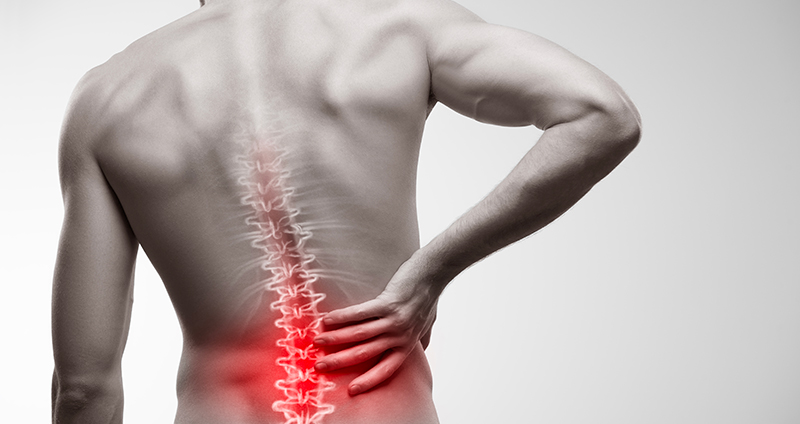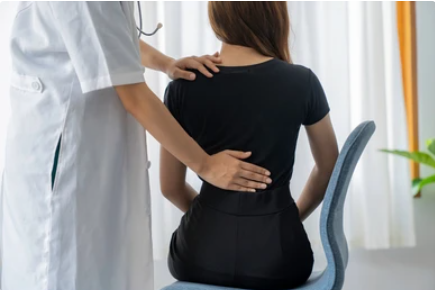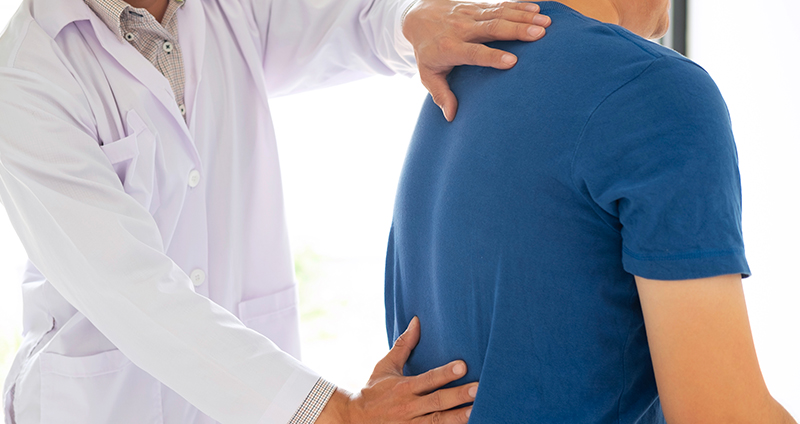If you have spent sleepless nights, tossing and turning in your bed, due to a feeling of discomfort and throbbing ache in your back, you are no stranger to back pain. Back pain is one of the most common reasons why people tend to seek medical help and miss work. Back pain can affect people from all age groups, due to different reasons. It can be the result of an injury, strenuous activity, or a medical condition. Aging also contributes to lower back pain due to the risk of conditions such as degenerative disc disease. However, depending on the root cause and severity of the pain, this condition can be treated effectively. Before we look at the various treatment methods for back pain relief, let us understand the causes and symptoms of the same.
Causes of Back Pain:
The back is a complex structure composed of muscles, tendons, ligaments, discs, and bones, which work together to support our body and enable movement. Back pain can be caused due to problems in any of these components. In some cases, the cause of the back pain remains unclear and is treated based on the symptoms.
Strain: This is the most common cause of back pain. Strained muscles or ligaments can occur due to overuse, improper lifting of weights, or sudden awkward movements. Back pain can also be caused due to muscle spasms or tension. Activities such as improper heavy lifting and sudden awkward movements can lead to muscle strain.
Bulging or ruptured discs: Structural problems such as bulging or ruptured discs cause back pain. Discs act as cushions in between the vertebrae. They can bulge or rupture, causing pressure on a nerve and resulting in pain.
Arthritis: Osteoarthritis can affect the lower back in addition to other joints, causing pain and stiffness. In some cases, the space around the spinal cord may narrow. This results in spinal stenosis.
Structural deformities to the spine: Back pain can be caused by conditions such as scoliosis, in which the spine curves to the side, or lordosis, an exaggerated inward curve of the spine.
Osteoporosis: This condition causes bones to become weak, making them more prone to fractures, including those in the spine.
Poor posture: Sitting or standing for long periods of time with poor posture can put stress on your back muscles and lead to pain. Activities such as twisting, bending awkwardly, over-stretching, straining the neck forward, and sleeping on the wrong mattress can also lead to back pain.
Infections: Certain infections can cause back pain, including spinal infections, which can occur after surgery or from injection of medications. Infection of the spine can be characterized by fever and tenderness in the back.
Cancer: Rarely, back pain can be a symptom of cancer that has spread to the spine.
Back pain can also be caused due to other conditions such as sleep disorders, sleeping in the wrong positions, shingles, sciatica, and more. If your back pain is accompanied by other severe symptoms or does not go away with home treatments and OTC medicines, it is important to seek medical help to prevent further complications.
Symptoms of Back Pain:

The symptoms of back pain may vary depending on the cause of the pain. However, let us look at some of the most common signs and symptoms of back pain.
Dull or sharp ache in the lower back, which may be constant or recurring
Pain that spreads from the back to the legs
Lower back Muscle stiffness or tension
Limited range of motion
Numbness or a tingling sensation in the legs
Weakness in the legs
Difficulty standing or walking
Muscle spasms or cramping
Back Pain that worsens with certain movements
In some cases, back pain that is severe, persistent, or accompanied by other symptoms such as fever, unexplained weight loss, or loss of bladder or bowel control may indicate a serious underlying condition and may require immediate medical attention.
Treating Back Pain:

As mentioned earlier, back pain can be effectively treated by understanding and addressing the root cause of the pain. In most cases, back pain often goes away with the help of adequate rest, home remedies, over-the-counter medicines and topical treatments such as back pain relief gels. However, if the back pain is severe and is accompanied by other symptoms, it might indicate an underlying health condition that requires medical attention.
While there are several pain relievers and pain relief treatments available in the market, it is important to choose the right pain relief solution for yourself. Here are some tips for choosing the right pain reliever to treat back pain.
Identify the type of pain: Different pain relievers work effectively or different types of pain. If your back pain is caused by inflammation, such as from a muscle strain or arthritis, nonsteroidal anti-inflammatory drugs (NSAIDs) may be effective. However, if your back pain is caused by muscle spasms, a muscle relaxant may be more helpful.
Consider your medical history: Some pain relievers can interact with other medications or have adverse effects on people with certain medical conditions. So, keep in mind your medical history while choosing your pain relief pills. You should take the help of your doctor for the same.
Choose the right treatment: Depending on the cause and type of pain, your doctor will choose the treatment that works best for you. Mild pain caused due to strain or strenuous activities can be treated at home through hot/cold compress, massages, and adequate rest. You can also use topical relief treatments such as pain sprays and pain relief gels for muscles. If the pain is caused by another health condition or is severe, your doctor might prescribe stronger pain medications with alternative treatments.
Choose the right dosage: If you are taking pain relief pills, the dosage of pain relievers can vary depending on your age, weight, and overall health. It’s important to follow the instructions on the label carefully and talk to your doctor or pharmacist if you have any questions.
Follow the instructions carefully: If you are using topical solutions for lower back pain treatment, make sure that you read the instructions carefully. Apply the pain relief gel or spray as per the instructions and use it as many times as directed for maximum relief.
While pain relief can be obtained through home remedies, topical treatments and medications, one must also ensure that proper precautions are taken in order to prevent pain such as avoiding unnecessary heavy lifting, exercising the right way, maintaining proper posture, and giving your body adequate rest. Remember, prevention is always better than cure!

